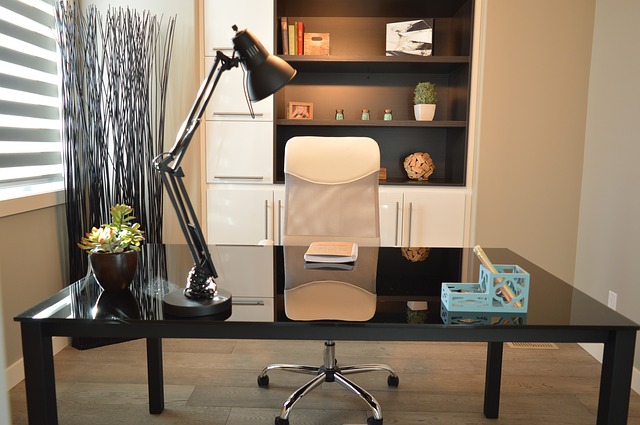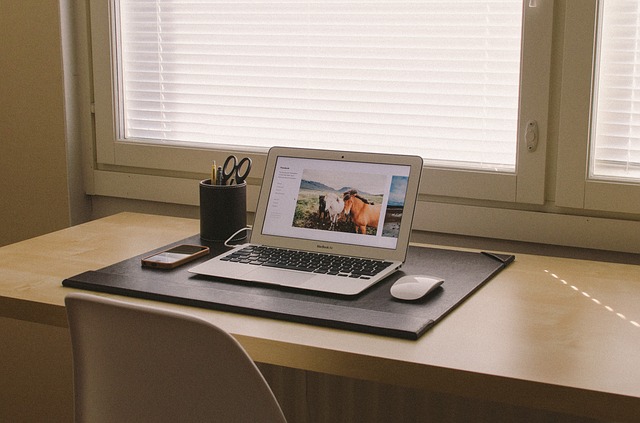If you were to stop and freeze in the position you’re right now, how would your body react? Do your wrists or neck hurt? Is your overall posture somewhat unpleasant? The long hours of studying at a desk, using your computer and mouse can certainly take a toll on your whole frame if you don’t take some preventive steps. Here are some tips you can employ to optimise your learning process and evade physical aches.
Seek a Natural Position
Start by moving your chair away from the desk, and sit down comfortably. Your whole body should feel relaxed, as if you’re sitting in a car. When you find your ideal position, memorise it, as this is your natural posture. Your back moves unobstructedly as you breathe, while the vertebrae are stacked properly.
You will notice that this differs from the rigid, upright sitting posture we were taught to do that in fact puts a lot more pressure on our frame. Take this information into consideration when constructing your own ergonomic studying workstation.

The Placement of Mouse and Keyboard
To accommodate your natural posture, the mouse and keyboard should be placed so that your arms are positioned at a 90° angle or below, while the elbows are kept to your sides. This smartly minimises the muscle load and eliminates the strain.
Height wise, the keyboard should be resting at a level that’s one or two inches above the thighs. This can be easily accomplished with a pull-out desk extension. When tilt is concerned, the ideal position of a keyboard should include a negative tilt, meaning it slopes away from us. This way our hands and arms can mimic the thighs’ downward inclination. In short, say goodbye to the counterproductive kickstands majority of keyboard models feature.
On to the keyboard’s place on the desk surface. In perfect conditions, the mouse and keyboard should be levelled and not stretching out of the shoulder-width distance. This setting can be obtained with a selection of shorter keyboard without a side number pad that disrupts the overall balance. Next, to enable the mouse and keyboard to sit evenly, acquire a flatter mouse or prop up the whole keyboard a bit.
The Screen Position
Whether you have one or several screens, we know what it takes achieve that ideal position. When located at an uncomfortably large distance, the screen will make us slouch and strain our neck trying to read from it.
To lock that sweet spot, sit back and place the arms straight in front of you. The point your middle finger reaches is where the screen should be placed, simple as that. The same principle applies when several monitors are utilised. Just make sure you leave no gap between them and centre the main monitor.
To tweak the height, ensure the address bar on the screen is at an eye level. If not, raise or lower the monitor/s accordingly with built-in or DIY tools. Lastly, oust the reflections by slightly tilting a screen towards you.

Furniture Considerations
A quality furniture is your most valuable ergonomic partner considering it provides support for your spine, bottom and overall posture all in one. When it comes to the chair selection, these are the characteristics you should be after:
- The shape: Let’s go back to your natural posture. Try to find a chair that matches that comfortable, slanting position, but provides sufficient lumbar support.
- The length: There shouldn’t be a lot of space between the back of your knees and the chair edge when you’re sitting down. Seek the chairs that have an ideal or customisable seat depth.
- The height: When seated, your feet should rest perfectly on the floor without dangling, and thighs should lie just below the hip level. The shorter people should set up a footrest, while taller individuals may need to perform some desk height adjustments.
As for the selection of materials for other furniture pieces, you can achieve a truly contemporary look with the steel and glass combination or go natural with sleek designer timber furniture. Whatever material you choose, remember that ergonomics and overall comfort should be the determining factors.
Quick Tip on-the-go
Take seriously the necessity of physical activity and take frequent breaks to stretch your legs and stimulate your whole body to prevent sitting-related health issues.
Don’t let your studying sessions leave you with sore back or eye related problems. Adjust your learning station for the optimal results.



